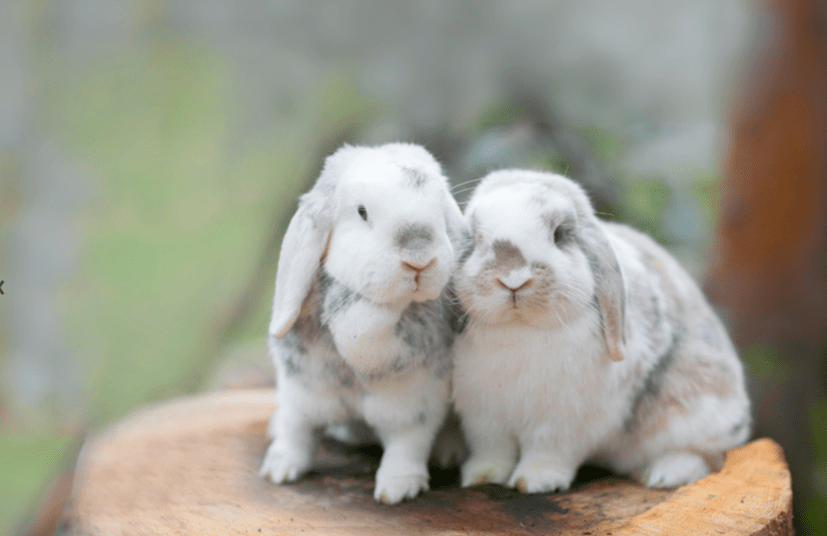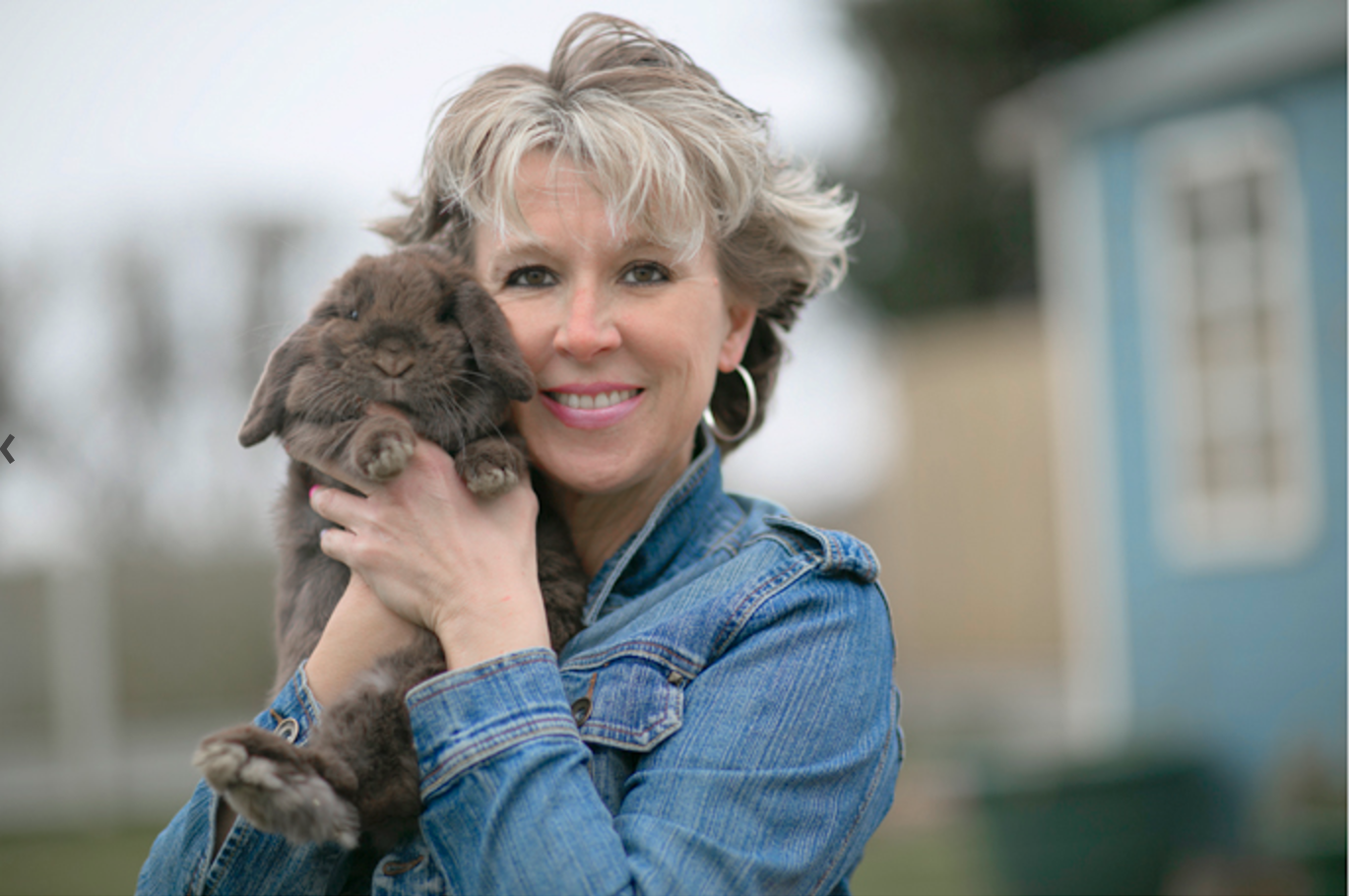These Adorable Bunnies Are Helping Sick, Aging People Feel Calmer

For years, pet lovers have known the power animals have to brighten up the darkest of days with their unconditional love and affection. From care homes to hospices, visits from four-legged friends can literally transform a person’s life. But normally we associate such visits with dogs — or sometimes cats — so imagine the surprise for animal lover Hazel, when she discovered her own pet rabbits loved visiting her local nursing home.
It all began last December, when Hazel’s mum, Margaret, spent a few weeks in a respite unit for people with Alzheimer’s. “Mum was very confused about the change and wasn’t settling at all well. To calm her down when I wasn’t there, the staff would tell her I was looking after my bunnies at home,” explains Hazel. “Mum associates me with my rabbits and that brought her comfort.” Then Hazel had the bright idea of taking her rabbits to visit her mum…
“Staff loved the idea. They already had a visiting Pets As Therapy dog and knew the positive effect my rabbits could have on all residents.
MUST-SEE: 12 ADORABLE Ways Dogs Show They Love You
‘Life was just getting too much, then suddenly this bunny took over my world’ “Within minutes of bringing Mopsy and Mumbles to Mum’s room, the colour came right back to her cheeks. She was really engaged and I was so struck by the change,” exclaims Hazel.
After this initial success, Hazel was keen to continue her bunny visits. “Other residents would come to say hello and one lady with real memory problems even remembered me and the rabbits from a previous meeting. I didn’t expect that — she even surprised the staff.” And Hazel’s fluffy friends have a positive effect on everyone.
“The reactions are of wonderful, unbridled joy,” she says. “Rabbits give so much and people need to realise how these little creatures, with their individual personalities, can really help. Time just disappears when we’re there. The residents don’t want to stop stroking the rabbits or watching them play. They’re just so precious,” she smiles.
Hazel grew up with rescue cats, dogs and even horses, but bonded with her daughter’s rabbit, Pompey, in 2013. Hazel was going through a tough time with work-related stress, looking after her mum, and coping with a major illness of her own. But no sooner had this baby bunny hopped onto her lap than her troubles simply melted away.
“I couldn’t take my eyes off that little bundle of fluff,” remembers Hazel. “Life was just getting too much, then suddenly this bunny took over my world. Nothing else had that effect.”
A forever love of bunnies
Once Hazel and Pompey had bonded, daughter Molly couldn’t bear to separate them – and Hazel’s love of bunnies took off. Today, Hazel shares her home with 15 rescue bunnies, who live in a luxury barn built by her son Kyle… and her partner Robert. “Robert’s convinced he’d get more attention if he had bigger ears,” Hazel laughs. “He sits in the front room watching TV while I’m usually out the back with the rabbits, but he does love them – he came with me when we first took Mopsy and Mumbles out.”
‘The residents don’t want to stop stroking the rabbits or watching them play’ However, not all bunnies are suited to therapy visits. Being handled is very stressful for some rabbits and most don’t like being picked up. As prey animals, they view handling as predatory behaviour, which scares them.
“I take Mopsy and Mumbles because they’re happy to be handled, kissed and cuddled,” says Hazel. She also suggests that rabbits be neutered or spayed, not only because it prevents unwanted litters, but because it also calms their hormones and helps them relax. It has lots of health benefits, too.

But a lot of time and effort is required to look after rabbits. Hazel advises not taking one in on a whim, or leaving them for children to look after. And adopting a bunny, rather than buying one from a pet shop, is much more beneficial, which is why all Hazel’s bunnies are from rescue centres, or adopted from situations where they were no longer wanted.
Rabbits are very emotionally aware, too, and love attention, which is why they make fabulous therapy pets. “My bunny knows when I’m having a bad day,” says Hazel. “She’ll hop up and kiss my face and even purrs with her teeth! She’ll put her feet out and stretch as if to say, ‘I’m comfy, give me lots of love.’
“Now I can pass on that experience to others, when I take my rabbits visiting. I’m sure that’s why they came into my life.”
Since December, Hazel has regularly visited local care homes and is thrilled with the response her rabbits are receiving. “I’ve just bought Mopsy and Mumbles some ‘official’ jackets from America, where bunnies as therapy are better known,” she says, with excitement. “They arrived last month; a blue one and a pink one. They say ‘therapy rabbit’ and have a carrot on each! I’ll take them out wearing the vests now, as a step towards more official recognition.”
Hazel would love the idea of therapy bunnies to get going in the UK, but for now she’s incredibly grateful for the comfort these wonderful animals have brought her and her family. “My bunnies give me a reason to get up every day. They’ve been a massive lift for Mum, and for other dementia sufferers, too. They could help so many more people, I’m certain. And I can’t stress that strongly enough.”
To find out more about Hazel’s bunnies and catch up with their therapy work, search for ‘Pompey and Friends’ on Facebook.
For more information on what wonderful pets rabbits make – and how to care for them – visit www.best4bunny.com.
This post was written by Alison James. For more, check out our sister site Yours.
More from Woman’s World
Mom-of-Three Shares Reason She Buys Extra Mother’s Day Cards
Remember Patty Simcox From ‘Grease’? Today She’s 64 and Gorgeous
ABC President Reveals How the ‘Roseanne’ Reboot Will Explain the Show’s Wacky Series Finale












